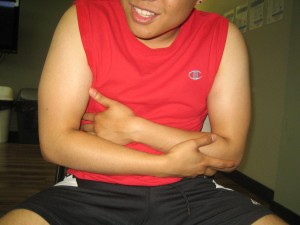A hernia is a term used to describe a strain in the abdominal muscles but it often starts with trauma to the groin muscle group. The most frequent form of hernia is an inguinal hernia that occurs in the groin area. Always bear in mind that this is not considered dangerous but requires medical care since it can lead to serious complications. Even if surgical intervention is required to deal with a hernia, it is a safe and reasonably minimally invasive procedure that does not require a prolonged span of recovery.
How hernias develop
A hernia develops once part of an internal organ, usually a region of the intestine pushes via a weakened region of the abdominal wall. The increased pressure can instigate the event, especially if there is a pre-existing weakness in the muscle wall. Engaging in strenuous exercise can lead to the development of a hernia as well as muscles that were weakened by the aging process.
Who are at risk?
This injury is quite common among individuals who play soccer and hockey due to the constant action of the hip joint. Generally, those who have had a single inguinal hernia are more likely to end up with another one as well as those who have a family history. In addition, men usually face the highest risk to develop hernias than women.
What are the signs and symptoms?

- Possible pain or pulling sensation
- Evident bulging in the groin area
- Vague feeling of being full
- Pain is noticeable when the individual strains, coughs, stands or bends over
- Among men, pain or swelling around the testicles occurs in which the intestine protrudes into the scrotum.
- In rare cases, there is severe pain if the hernia could not move back into the abdomen and blocks the blood supply.
Initial treatment
The treatment might not be required unless the symptoms are present, but it is best to consult a doctor. In most cases, the doctor will recommend the “wait and see” approach. On the other hand, if the hernia disrupts with the performance of the individual in sports, the doctor will recommend the correction of the condition. It is vital to seek immediate medical care if the individual experiences significant pain.
Returning to activity
The hernia will not get better over time, but it might not worsen or require treatment for months or years. Take note that “watchful waiting” is a suitable option for men who have minimally symptomatic inguinal hernias.
Prevention
The individual should maintain a weight that is suitable to his/her height and frame. When lifting heavy objects, it should be done by bending the hips and knees to prevent straining. In addition, it is vital to stick with foods that have high fiber content in order to prevent constipation which increases straining, thus increasing the risk for developing a hernia.
